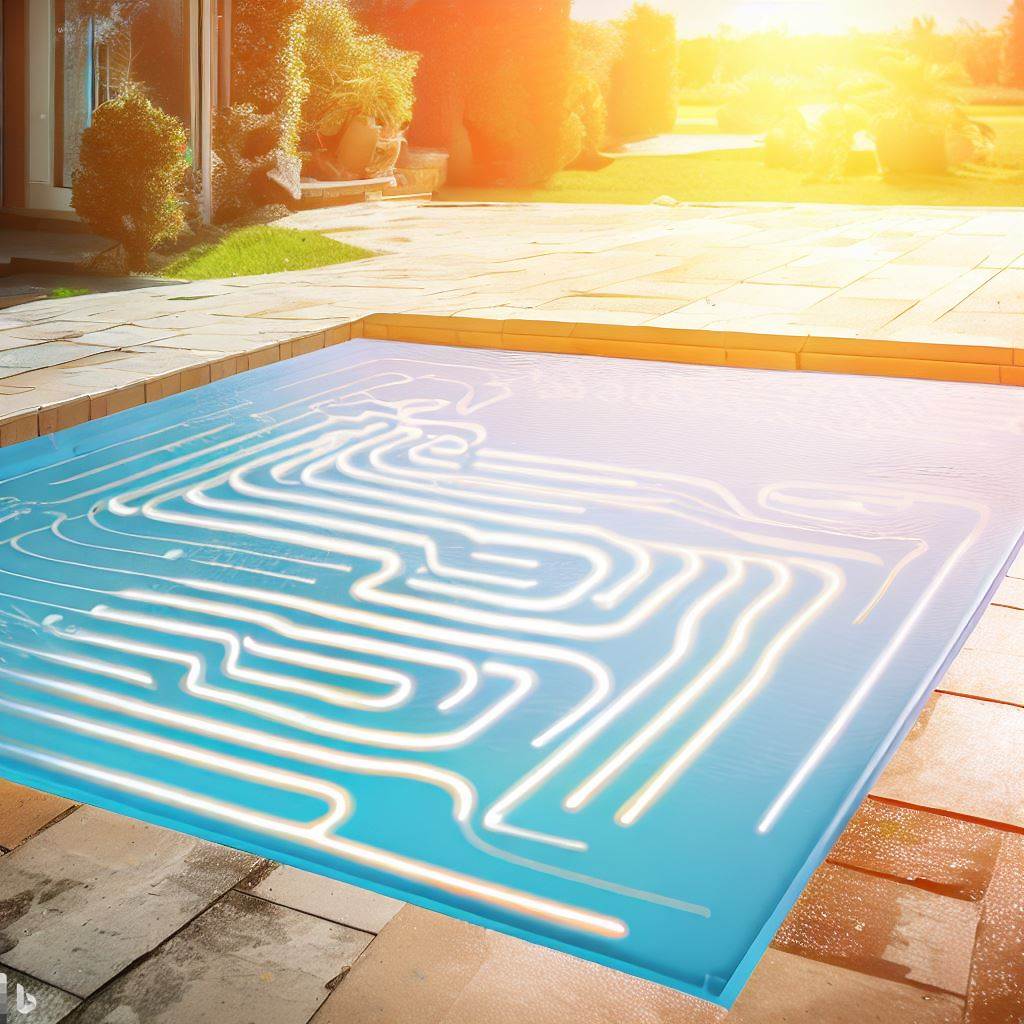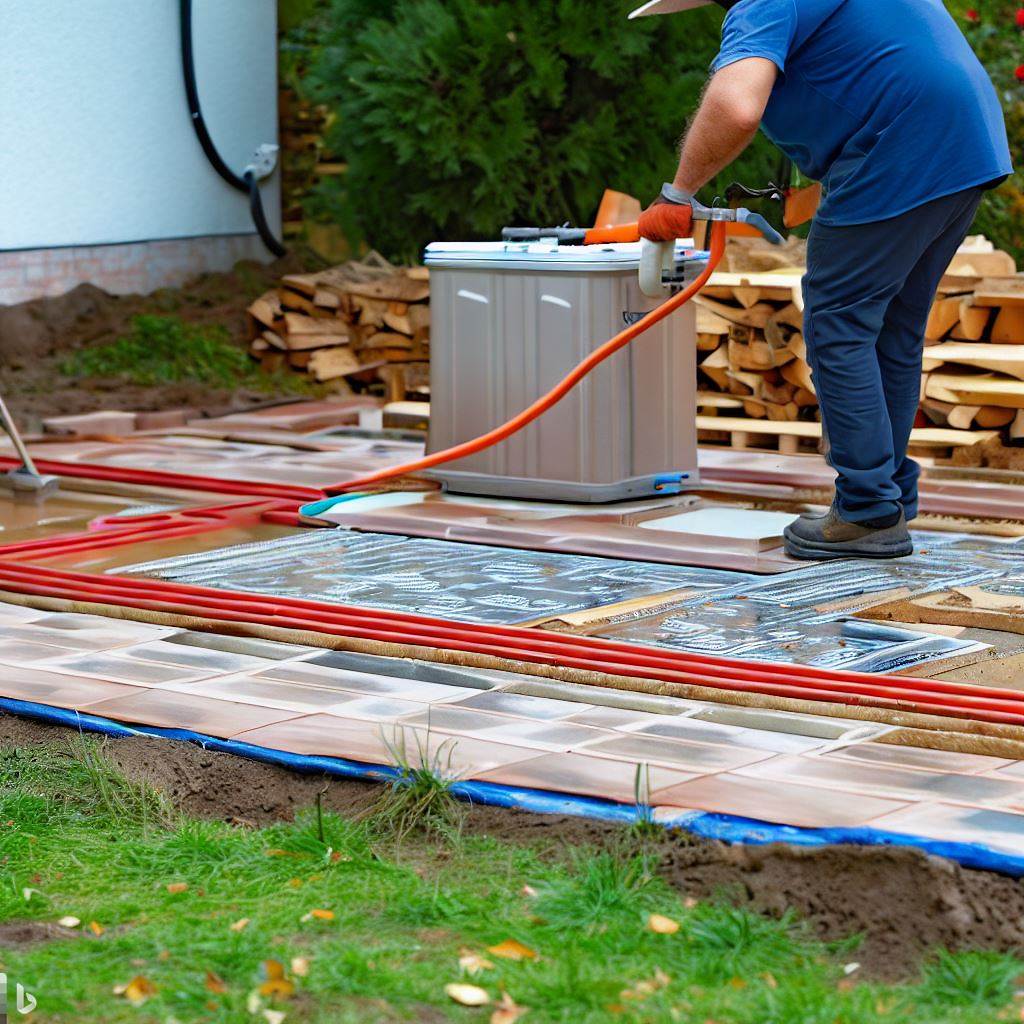Table of Contents
Choosing the right heating system for your home can get quite bewildering, especially when considering factors like initial cost and long-term efficiency. A popular solution is water underfloor heating, recognized for its energy-saving properties.
This blog post will guide you through the pros and cons of this system, providing valuable insight into whether it’s a cost-effective choice for your circumstances. Let’s dive in to understand better: Is water underfloor heating worth your investment?.
Key Takeaways
- Water underfloor heating is a cost – effective choice for homeowners due to its energy efficiency and low operating costs.
- The system provides even heat distribution, eliminating cold spots and reducing the overall energy required to maintain a comfortable temperature in your home.
- While there may be an initial investment involved, the long – term savings and potential energy savings make water underfloor heating a worthwhile investment.
Cost-Effectiveness of Water Underfloor Heating
Water underfloor heating can be cost-effective when considering the initial investment versus long-term savings, comparing energy consumption and heating costs, as well as factoring in the lifespan and maintenance requirements of the system.
Initial investment vs long-term savings

When considering water underfloor heating, it’s important to weigh the initial investment against the long-term savings. Here are some key points to consider:
| Initial investment | Long-term savings | |
| Lower energy consumption | Water underfloor heating systems are known for their energy efficiency. | They provide a more even heat distribution, which reduces the overall energy required to maintain a comfortable temperature in your home. |
| Cost-effective operation | Once installed, water underfloor heating systems are effortless to run. | They require minimal maintenance and have low operating costs compared to traditional heating systems. |
| Reduced reliance on radiators | With water underfloor heating, you can eliminate or minimize the need for radiators. | Allowing for more space and design freedom in your rooms |
| Long lifespan | A properly installed and maintained water underfloor heating system can last for decades. | This longevity adds value and further contributes to its cost-effectiveness over time. |
| Potential savings on floor coverings | Underfloor heating works well with all types of floor coverings, which means you can choose from a wide range of materials without sacrificing the effectiveness of your heating system. | This flexibility may lead to cost savings when selecting flooring options. |
Comparing energy consumption and heating costs
Between water underfloor heating and electric underfloor heating, there is a significant difference in both energy consumption and heating costs. Although both types of underfloor heating provide comfort and efficiency, water-based systems are generally more cost-effective in the long run compared to their electric counterparts.
| Heating Type | Energy Consumption | Heating Costs |
|---|---|---|
| Water Underfloor Heating | Lower energy usage due to its high efficiency and ability to operate at lower temperatures compared to traditional heating systems. | While initial installation costs can be significant, the operational cost is usually low, making it cost-effective over time. |
| Electric Underfloor Heating | Tends to use more energy due to its need to heat the electric coils, leading to higher energy consumption. | Although installation costs are typically lower than water-based systems, it is generally more expensive to run, making it less cost-effective in the long run. |
Considering the lifespan and maintenance requirements
Water underfloor heating systems have a lifespan of around 25 to 50 years, depending on the quality of installation and maintenance. This means that once installed, you can expect your system to provide efficient and cost-effective heating for decades to come.
In terms of maintenance, water underfloor heating generally requires minimal attention. Regular inspections and servicing by professionals are recommended to ensure optimal performance. However, compared to traditional heating systems like radiators, underfloor heating has fewer moving parts and therefore fewer potential issues that require costly repairs or replacements.
Overall, when considering the lifespan and maintenance requirements of water underfloor heating, it becomes evident that this type of system offers long-term cost-effectiveness with minimal upkeep needs.
In addition, it is important to note that electric underfloor heating tends to have higher upfront costs compared to water-based systems. Electric systems also often require more frequent replacement due to their shorter lifespans (typically around 15 years).
Pros of Water Underfloor Heating

Water underfloor heating offers energy-efficient heating that is effortless to run and provides more space and design freedom in a room.
Energy efficient heating
Underfloor heating systems operate with increased energy efficiency, thus providing a cost-effective solution for homeowners. They disperse heat across the entire floor surface, resulting in even room temperatures and eliminating cold spots often experienced with traditional radiators.
Unlike radiators that need to run at high temperatures (between 149-167°F), water-based underfloor heating systems only need around 85°F to effectively warm your space, leading to significant energy savings.
By requiring less heat, these underfloor systems maximize every unit of energy they use – an advantage that cuts down on wasteful consumption over time. With this low-energy profile from water underfloor heating, you’ll witness improvement not just in warmth but in your annual utility bills too!
Effortless to run
Once installed, water underfloor heating systems are incredibly easy to operate. Unlike traditional heating methods that require constant adjustments and monitoring, underfloor heating provides a consistent and comfortable heating experience without any effort on your part.
With the use of thermostats and smart technologies, you can easily set the desired temperature for each room in your home and let the system do all the work. This means no more fiddling with radiator valves or adjusting thermostat settings throughout the day.
The even distribution of heat also eliminates cold spots, making it a hassle-free option for maintaining a cozy environment in your home.
More space and design freedom
With water underfloor heating, you can enjoy the luxury of having more space and design freedom in your room. Unlike traditional radiators that take up valuable wall space, underfloor heating is hidden beneath the floor, freeing up walls for furniture placement and allowing for a more spacious feel.
This means you have greater flexibility when it comes to arranging your furniture and decor. Additionally, since there are no visible radiators or vents, you have the freedom to design your room without any limitations imposed by heating elements.
With water underfloor heating, you can create a clean and sleek aesthetic while still enjoying efficient warmth throughout your home.
Works with all floor coverings
Water underfloor heating is compatible with all types of floor coverings, giving you the freedom to choose any flooring material that suits your style and preferences. Whether you prefer luxurious carpets, elegant hardwood, or modern tiles, water underfloor heating can accommodate them all.
This versatility allows you to seamlessly integrate the heating system into your home without compromising on aesthetics. With water underfloor heating, you can enjoy a cozy atmosphere while maintaining the desired look and feel of your floors.
Safety and comfort
For those considering water underfloor heating, safety and comfort are important aspects to consider. With this type of heating system, there are no exposed hot surfaces or sharp edges, making it a safer option for households with children or pets.
The radiant heat from the underfloor pipes creates a gentle warmth that evenly distributes throughout the room, eliminating cold spots and drafts. This provides a comfortable and cozy environment for occupants, without the need for bulky radiators or heaters cluttering up the space.
Additionally, water underfloor heating is often compatible with thermostat controls, allowing you to easily regulate the temperature and ensure optimal comfort at all times. So you can enjoy both peace of mind and ultimate coziness in your home with water underfloor heating.
Cons of Water Underfloor Heating
Water underfloor heating has some drawbacks, including high installation costs, lengthy installation times, and the potential issue of increased floor height.
Installation cost
The installation cost of water underfloor heating can be a significant factor to consider. While it provides many benefits, such as energy efficiency and comfort, the initial investment for installing this system can be higher compared to traditional heating methods.
However, it’s important to keep in mind that the long-term savings and efficiency of water underfloor heating often outweigh the upfront expenses. According to experts, electric underfloor heating is generally more expensive both in terms of installation and running costs than water-based systems.
It is also worth noting that electric systems are more suitable for retrofitting in existing properties due to their convenience and ease of installation. Overall, while there may be an initial expense involved with installing water underfloor heating, the cost-efficiency and long-term benefits make it a worthwhile investment for homeowners seeking optimal comfort and energy-efficient solutions for their homes.
Installation time

Installing water underfloor heating can be a time-consuming process. It involves laying down piping or tubing throughout the floor space and connecting it to the central heating system. The installation time will depend on factors such as the size of the area, type of flooring, and complexity of the layout.
Generally, installing water underfloor heating can take several days or even weeks if there are multiple rooms involved. This is an important consideration for homeowners who may need to plan ahead and make alternative arrangements during installation.
However, despite the longer installation time compared to other heating systems, many people find that the benefits of water underfloor heating outweigh this initial inconvenience in terms of energy efficiency and comfort levels.
Floor height issues
Floor height issues can sometimes be a concern when considering water underfloor heating. This is because the installation of underfloor heating requires additional depth to accommodate the piping or cables beneath the floor.
While this may not pose a problem in new constructions, it can cause challenges in existing properties where floor height might already be limited. It’s important to take into account this factor and assess whether raising the floor level will be feasible and practical for your specific situation.
FAQs
Is water underfloor heating cost-effective compared to traditional heating systems?
Water underfloor heating can be more cost-effective in the long run as it operates at lower temperatures and provides a more even heat distribution, resulting in potential energy savings and reduced heating bills.
What are the advantages of water underfloor heating?
Some advantages of water underfloor heating include improved comfort levels, reduced dust circulation, no need for radiators taking up wall space, and better compatibility with renewable energy sources.
Are there any disadvantages or considerations for water underfloor heating?
Disadvantages of water underfloor heating may include higher installation costs compared to traditional systems, longer warm-up times, and potential restrictions on flooring types or floor coverings that can be used.
How can I determine if water underfloor heating is suitable for my home or building?
It is best to consult with a professional installer who can assess your specific requirements and provide advice tailored to your property’s size, insulation levels, and overall design before deciding whether water underfloor heating is suitable for you.
Conclusion
In conclusion, water underfloor heating can be a cost-effective option due to its energy efficiency and low operating costs. While the initial installation cost and time may be higher compared to other heating systems, the long-term savings and comfort provided make it worth considering.
However, it is important to weigh the pros and cons of water underfloor heating against your specific needs and budget before making a decision.
